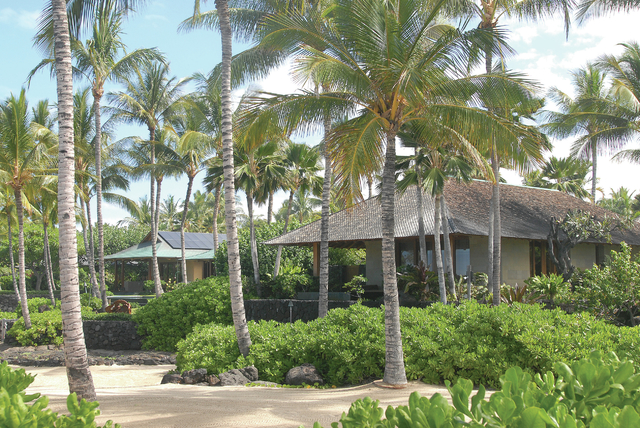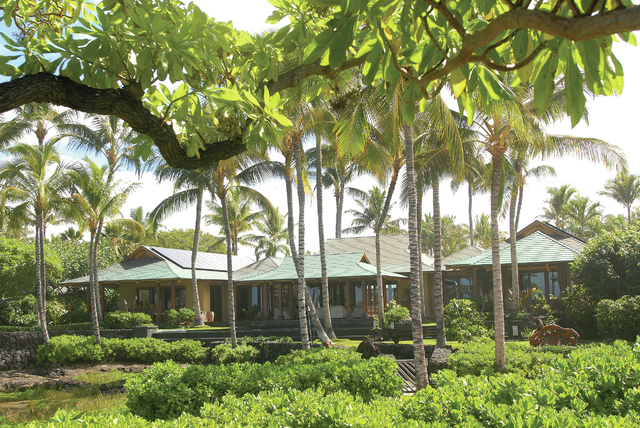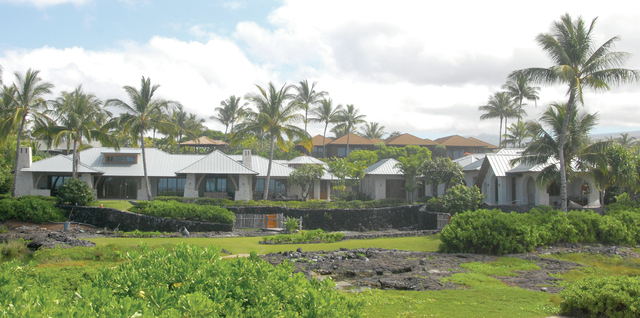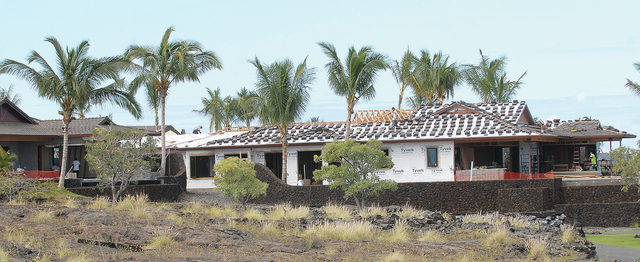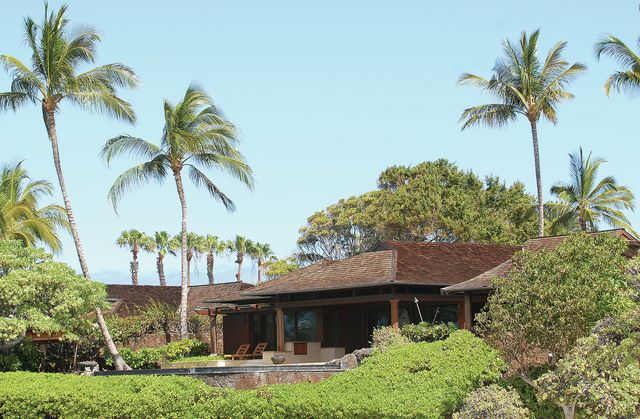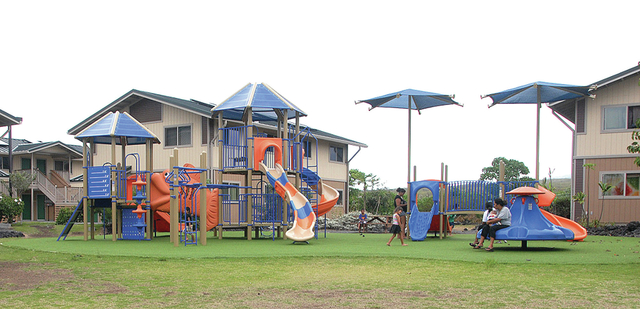Lower taxes for lower incomes
KAILUA-KONA — Hawaii is home to some of the most onerous income tax regulations in the nation. Adversely, its average property tax rates are the lowest in all 50 states. A measure that would upend this paradigm by overhauling the state’s current system of taxation passed through the House Tourism Committee Tuesday.
The measure, House Bill 1586, aims primarily to reduce income taxes on low-income and middle-income families, as well as seniors.
Doing so would create a substantial dip in state revenue, however, which the bill proposes be addressed by implementing a three-year phase out of an annual subsidy pulled from the Transit Accommodation Tax (TAT) and disbursed among the counties. That subsidy totaled $103 million over fiscal year 2016-17.
If the state abolished the subsidy, it would force counties to make up millions in lost revenue by re-examining property tax rates. Supporters of the bill say Hawaii’s low rates are used by non-resident investors to their own advantage, allowing them to create tax havens in the form of multi-million dollar properties in a state where they don’t contribute to the income tax base.
Rep. Nicole Lowen — a co-sponsor of the bill, who represents Kailua-Kona, Holualoa, Kalaoa and Honokohau — said it’s time for Hawaii to find a cleaner solution to its tax code.
“We need to have a real conversation about where are the real potential sources of revenue and how can we reform our current system so that it’s more progressive? Because as it stands right now, it’s not,” she said. “We really overtax people at the bottom, and we should let them keep more money in their pockets and be looking at higher incomes.”
Rep. Richard Onishi — who represents Hilo, Keaau, Kurtistown and Volcano, and serves as chair of the House Committee on Tourism — explained that if HB1586 were to become law, it would simplify the income tax code, which would then be subject to annual adjustments over the following three years.
The bill limits the number of tiers on the tax schedule to four, creating larger brackets paying in at a lower percentage. In 2018, for instance, those filing under joint or head-of-household statuses and making under $15,000 annually would pay no income tax.
Those on the second level, earning between $15,000 and $75,000, would pay nothing on the first $15,000 earned. Any income above that line would be taxed at a rate of 6.64 percent. The other two brackets designate rates for those earning between $75,000-$225,000 annually, and those who earn more than $225,000 per year.
The income cap eligible for zero taxation would rise to $17,500 by the year 2020, while rates for the next two brackets would decline marginally, also until 2020. The rate paid by those in the highest of the four income tax brackets would increase slightly, capping at 9 percent in 2020.
Those filing under single or married-filing-separate statuses would be subject to separate rates crafted with the same intention.
Onishi said there has not yet been any reliable data generated to determine the exact amount of revenue the state would lose by implementing the progressive taxation system proposed by the bill.
“It’s complicated to determine where in the bracket people actually end up,” he said. “That information is not readily available. There was a request to ask for a projected outcome, but it might not be possible.”
Even without hard data, Onishi said legislators understand the revenue decrease would be significant, as Hawaii has one of the highest poverty rates in the nation.
He explained the bill is targeting the TAT subsidy as the best way to recoup lost revenue because of the amount of annual funding it represents, as well as the other services the state provides to counties — services most other states in the nation do not.
Namely, Onishi mentioned the state-funded public education system, public safety system and hospital system.
“Normally, those services are provided by counties or municipalities — by their taxing authority,” he explained. “In the state of Hawaii, counties are not burdened with having to provide those. In order to continue those services and others, we need to maintain the revenue coming in.”
County representation, however, doesn’t see eye-to-eye with the state on the matter.
The Hawaii State Association of Counties submitted testimony to the House Tourism Committee stating the counties’ unilateral opposition to the bill.
“A phase out of the counties’ share of the TAT would impose a heavy financial burden to our tax paying residents — constituents both the state and counties serve,” HSAC’s testimony read. “Counties will have to adjust real property taxes to cover the increasing operational costs for county-maintained services used by our visitors … Why should local residents be responsible for expenses that visitors have already paid for through the TAT?”
Hawaii Island Mayor Harry Kim said his opposition is rooted in two concerns. First, he said, a primary purpose of the TAT was to distribute revenue to the counties, adding that county representation has fought for its equitable share for years.
Onishi said Hawaii Island’s share of the TAT is little more than $19.5 million this fiscal year.
Second, Kim said the vast majority of every county’s revenue is single-source, and that source is property tax. He said more than 70 percent of the Big Island’s revenue currently comes from property taxes.
“One of the worst things you can do is to be a single source anything,” Kim said. “In the old days of Hawaii, the single source of the economy was plantations, and you can see what happens when that dries out for whatever reason.”
Kim acknowledged counties are eligible to impose a general excise tax, but he’s hesitant to do so considering Hawaii County’s high rate of poverty and his personal belief in limited, fair taxation policies.
Onishi didn’t share all of Kim’s concerns, saying the counties could command more revenue if they brought the illegal vacation rental market under better control.
Lowen said that estimates she’s seen indicate more than 50 percent of West Hawaii condos are owned by out-of-state residents.
“If you can buy a home, invest in it, rent it out as an Airbnb for 10 days a month and be able to pay your mortgage out of that, it drives prices up and reduces amount of inventory,” Onishi explained. “We believe there are thousands of illegal vacation rentals throughout the entire state. We see very little activity on behalf of the counties to enforce their ordinances involving use of property.”
Tom Yamachika of the Tax Foundation of Hawaii, however, said an underlying premise of HB1586 is flawed.
“One of the things happening with that bill is apparently somebody has made an assumption that property taxes are too low, and raising property taxes is one way to straighten out our cost of living,” he said. “We don’t agree with the fundamental premise of that. The reason why our property taxes are so low is because our property taxes don’t currently fund education.”
Yamachika went on to say that any increase to property taxes is likely to create an outcome that won’t leave Hawaii residents unscathed, mitigating the financial aid they’ll receive on the front end in the form of lower income taxes.
“It raises the question of whether you can target the increases to a particular audience, like the snowbirds. How are you going to do that?” he posed. “You can jack up the hotels and resorts and leave the residents alone, but you’re not going to raise enough money. If it doesn’t, then you have to hit residential and commercial. If you hit commercial, it’s going to (affect) the cost of living, obviously. If you hit residential, probably the same thing, although indirectly.”


